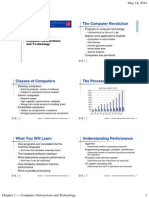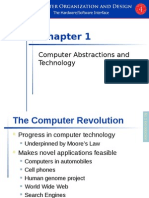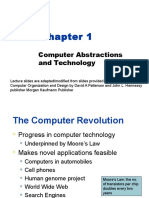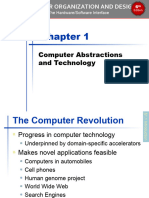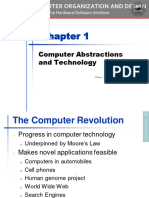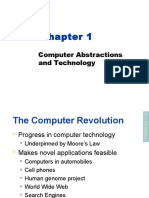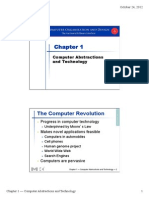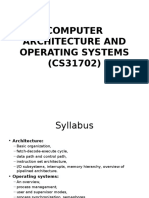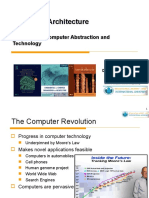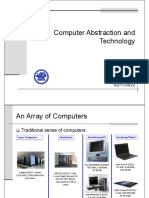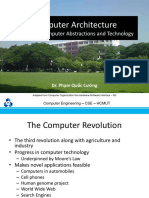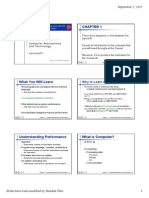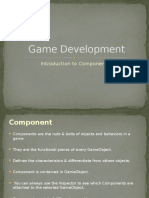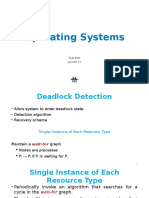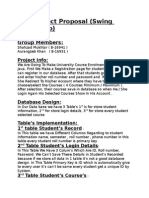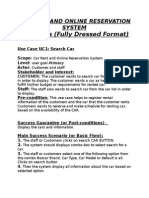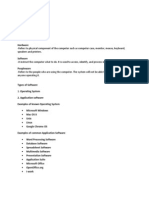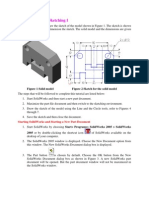0% found this document useful (0 votes)
117 views25 pagesComputer Abstractions & Performance
This document provides an overview of computer hardware and performance. It discusses the different components of a computer including the processor, memory, input/output devices, and networks. It describes how programs are executed at different levels of abstraction from high-level languages to machine code. The document also examines different factors that influence computer performance such as the processor speed, memory access time, and number of instructions required by an algorithm. It defines metrics for measuring performance including response time and throughput.
Uploaded by
Aurangzeb KhanCopyright
© © All Rights Reserved
We take content rights seriously. If you suspect this is your content, claim it here.
Available Formats
Download as PDF, TXT or read online on Scribd
0% found this document useful (0 votes)
117 views25 pagesComputer Abstractions & Performance
This document provides an overview of computer hardware and performance. It discusses the different components of a computer including the processor, memory, input/output devices, and networks. It describes how programs are executed at different levels of abstraction from high-level languages to machine code. The document also examines different factors that influence computer performance such as the processor speed, memory access time, and number of instructions required by an algorithm. It defines metrics for measuring performance including response time and throughput.
Uploaded by
Aurangzeb KhanCopyright
© © All Rights Reserved
We take content rights seriously. If you suspect this is your content, claim it here.
Available Formats
Download as PDF, TXT or read online on Scribd
/ 25




